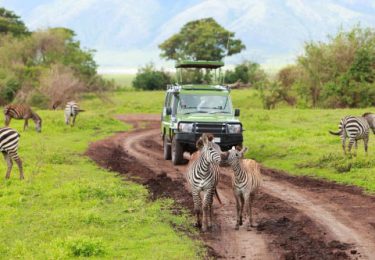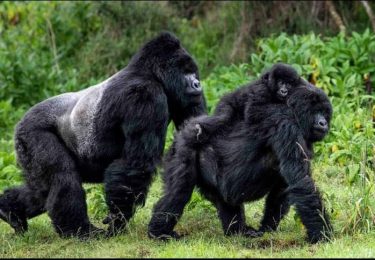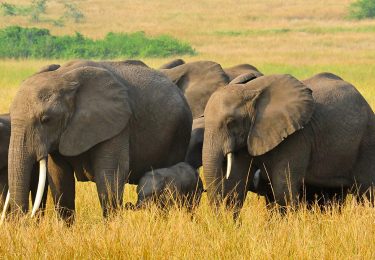- Home
- About Us
- Uganda safaris
- Long Safaris
- Short Safaris
- Day Short Safaris
- 1 Day Entebbe Botanical gardens weekend birding excursion
- I Day Entebbe City Tour
- 1 Day Jinja, Mabira, Ssezibwa Tour
- 1 Day Jinja Source of the Nile tour
- Lake Victoria Sunset Cruises
- 1 Day Kampala City Tour
- 1 Day Mabamba Shoebill Stork And Birding Tour
- 1 Day Makanaga Shoebill And Birding Trip
- 1 Day Ngamba Island Boat And Chimpanzee Excursion
- Other Tours
- Gorilla Safaris
- Uganda Gorilla safaris
- 4 Days Mgahinga Bwindi gorilla and golden monkey trekking safari
- 3 Days Mgahinga Gorilla trekking safari
- 5 Days Mgahinga Gorillas, Golden Monkey And Lake Bunyonyi Tour
- 5 Days Gorillas And Wildlife, L.Mburo, Bwindi and L. Bunyonyi
- 8 Days Wildlife, Gorillas, Golden Monkeys Trip
- 8 Days Gorillas Chimpanzee and wildlife Trekking Tour
- 9 Days Kidepo Valley National park and Bwindi Gorilla Safari. Wildlife and gorillas
- 11 Days Gorilla And Chimpanzee Tracking and wildlife Safari
- Rwanda Gorilla Safaris
- Uganda Gorilla safaris
- National Parks
- Kidepo Safaris
- Queen Elizabath Safaris
- Lake Mburo Safaris
- Mgahinga
- Mgahinga Gorilla National Park
- 3 Days Mgahinga Gorilla trekking safari
- 4 Days Mgahinga Bwindi gorilla and golden monkey trekking safari
- 5 Days Rwand-Uganda Gorilla, Golden Monkey trekking trip
- 5 Days Mgahinga Gorillas, Golden Monkey And Lake Bunyonyi Tour
- 8 Days Wildlife, Gorillas, Golden Monkeys Trip
- Our Blog
- Other Safaris
- Home
- About Us
- Uganda safaris
- Long Safaris
- Short Safaris
- Day Short Safaris
- 1 Day Entebbe Botanical gardens weekend birding excursion
- I Day Entebbe City Tour
- 1 Day Jinja, Mabira, Ssezibwa Tour
- 1 Day Jinja Source of the Nile tour
- Lake Victoria Sunset Cruises
- 1 Day Kampala City Tour
- 1 Day Mabamba Shoebill Stork And Birding Tour
- 1 Day Makanaga Shoebill And Birding Trip
- 1 Day Ngamba Island Boat And Chimpanzee Excursion
- Other Tours
- Gorilla Safaris
- Uganda Gorilla safaris
- 4 Days Mgahinga Bwindi gorilla and golden monkey trekking safari
- 3 Days Mgahinga Gorilla trekking safari
- 5 Days Mgahinga Gorillas, Golden Monkey And Lake Bunyonyi Tour
- 5 Days Gorillas And Wildlife, L.Mburo, Bwindi and L. Bunyonyi
- 8 Days Wildlife, Gorillas, Golden Monkeys Trip
- 8 Days Gorillas Chimpanzee and wildlife Trekking Tour
- 9 Days Kidepo Valley National park and Bwindi Gorilla Safari. Wildlife and gorillas
- 11 Days Gorilla And Chimpanzee Tracking and wildlife Safari
- Rwanda Gorilla Safaris
- Uganda Gorilla safaris
- National Parks
- Kidepo Safaris
- Queen Elizabath Safaris
- Lake Mburo Safaris
- Mgahinga
- Mgahinga Gorilla National Park
- 3 Days Mgahinga Gorilla trekking safari
- 4 Days Mgahinga Bwindi gorilla and golden monkey trekking safari
- 5 Days Rwand-Uganda Gorilla, Golden Monkey trekking trip
- 5 Days Mgahinga Gorillas, Golden Monkey And Lake Bunyonyi Tour
- 8 Days Wildlife, Gorillas, Golden Monkeys Trip
- Our Blog
- Other Safaris
KIBALE FOREST NATIONAL PARK

QUEEN ELIZABETH NATIONAL PARK
January 23, 2024
MGAHINGA GORILLA NATIONAL PARK
January 23, 2024Kibale forest national park also known as the “Primate Capital of the World” is situated in the western part of Uganda in Kamwenge district. It was gazetted as a forest reserve in the 1932 and later established/ upgraded to a national park in 1993 due to its biodiversity that includes; over 350 tree species, over 370 bird species and 71 mammal species. The park is popular for its biggest number of habituated chimpanzees as well as 12 other primate species such as L’hoest’s monkey, black and white colobus, red colobus, red-tailed monkey, vervet monkey, olive baboon, blue monkey, grey cheeked mangabeys, patas monkey, Ugandan mangabeys, pottos and demidoff which make it one of the highest diversity and concentration of primates in East Africa.
Located east of the Rwenzori Mountain, the landscape is dotted with volcanic crater lakes, carpeted with tea plantations, tropical forests and close to the tranquil Ndali-kasenda. Kibale forest national park covers an area of 795 square kilometers and it forms a continuous forest that adjoins with Queen Elizabeth National Park.
The park has got two tourism sites; the main hub at Kanyanchu which is just 35 kilometers southeast of Fort portal on the Kamwenge road and a secondary site found at Sebitoli which is just 16 kilometers east of Fort portal on the Kampala road. Its vegetation offers different varieties of wildlife habitat, ranging from the moist evergreen forest along the Fort portal plateau then through the dry tropical forest to the woodland and savanna along the rift valley floor. The vegetation rises to over 55 meters and establishes a semi-closed canopy of massive stratified tree crowns. Kibale forest national park comprises of a diverse array of landscapes, over 351 tree species, shade tolerant herds, a variety of ferns, shrubs and broad leaved forest grasses.
Kibale forest national park has got over 325 bird species including six species that are endemic to the Albertine Rift region namely; Blue-headed sunbird, Black-capped apalis, Purple-breasted sunbird, Collared apalis, Red-faced woodland warbler and Dusky crimson wing. Other bird species may include; Brown-breasted alethe, Crowned eagle, Kibale ground thrush, African pitta, Black bee-eater, Blue-headed sunbird, Blue breasted kingfisher, Abyssinian ground-thrush, Yellow rumped tinker bird, Eastern nicator, Green breasted pitta, Little greenbul, White-napped pigeon, Nahan’s francolin, Yellow-throated nicator, White-headed wood-hoopoe, Dusky-blue flycatcher to mention a few.
Besides the primates and bird species, the park has also got terrestrial mammals such as blue duiker, sitatunga, red duiker, African buffalo, warthog, giant forest hog and bush pig. You might also spot some carnivores depending on what nature is willing to offer such as serval cat, leopard, African golden cat, mangoose and two different species of otter. Lions also do visit the park but on rare occasions and for the keen viewers, you will be able to spot some reptiles, colorful butterflies and amphibians.
Batooro and Bakiga are the tribes that inhabited the areas around the park; they get food from it and also other resources with the help of the Uganda Wildlife Authority. The population around the park has increased by sevenfold in the previous century and this is because the park brings in revenue directly for those living around it and the tourism industry has also created job opportunities. Furthermore, farmers believe that the soil is fertile for crop growing all year around and with all the above, the park has been developed. The New Nature Foundation; one of the organizations in the area is working hard to restore harmony between the people living around the park by empowering local citizens to meet their needs in sustainable ways.
WHAT TO DO IN KIBALE FOREST NATIONAL PARK
Chimpanzee tracking
This is the activity that makes the park famous and its done twice a day; early in the morning and in the afternoon therefore, you have an opportunity to choose which time is conducive for you but the morning time is highly recommended. Early in the morning after breakfast, your driver will drive you to the headquarters for briefing where the ranger will divide you into groups. After the briefing, ranger will lead the group into the forest in search for the chimpanzees depending where they spent their night. Upon seeing them after a lot of hiking, you will be given an hour to spend with them as you see them do their daily activities. During this moment, don’t hesitate to take a number of pictures and videos for memories. After here, you will head back to the headquarters where you will be rewarded a certificate upon finishing the chimpanzee tracking activity.
Bird watching
Has mentioned above, Kibale forest national park is a home to over 325 bird species including 6 that are native to the Albertine Rift area namely; Collared apalis, Red-faced woodland warbler Blue-headed sunbird, Black-capped apalis, Purple-breasted sunbird, and Dusky crimson wing. The Bigodi nature walk offers the best birding opportunity in the park since the swamp alone has over 138 bird species including; the Crowned eagle, Kibale ground thrush, Green breasted pitta, Little greenbul, White-napped pigeon, Nahan’s francolin, Yellow-throated nicator, White-headed wood-hoopoe, Dusky-blue flycatcher African pitta, Black bee-eater, Blue-headed sunbird, Blue breasted kingfisher, Abyssinian ground-thrush, Yellow rumped tinker bird and so many more.
Hiking and nature walks
For those that love nature walks and hiking, there is a 12 kilometers hike into the forest. While here, you are able to spot a number of bird and animal species. Though this activity is advised to be done in the dry season because trails are very muddy during the wet season. There is also an option of night walks to see the nocturnal as the rest of the forest inhabitants are at rest. While doing the night walks, rangers use powerful torches and some of the nocturnal you will encounter are; hyrax, serval cat, civet, bush baby and pottos. The night walks start at 7pm and last for two and a half hours.
Cultural encounters
These cultural tours are led by a local guide and while here, you will get a chance to meet the native Batooro people as well as the Bakiga immigrants who migrated from the densely populated southwestern parts of Uganda and now stay around the park. During this activity, you will be able to visit some traditional villages in order to see their traditional life style, visit the traditional healers, local churches, schools and this will make your trip memorable. If you wish, don’t hesitate to take part in their traditional dances though they require a lot of energy especially that of the Bakiga.
HOW TO GET THERE
Kibale Forest National Park can be accessed by road from Kampala through Mityana-Mubende route and this takes approximately 6 hours. You can also access it from Kampala through Hoima-Kyenjojo and this is about 7 hours. Note that there is no airstrip close to the park except of the one which lands in Kasese and its 2-3 hour’s drive to connect to the park.





